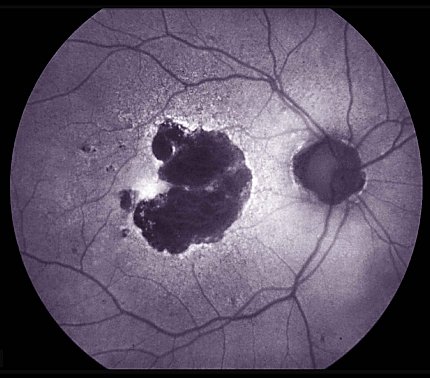Antibiotic Shows No Benefit for Dry AMD

Photo: NEI
The drug minocycline, an antibiotic that also decreases inflammation, failed to slow vision loss or expansion of geographic atrophy in people with dry age-related macular degeneration (AMD), according to a phase II clinical study at NEI. The drug has shown beneficial effects for diabetic retinopathy, but had not previously been tested for dry AMD.
Dry AMD affects the macula, the part of the eye’s retina that allows for clear central vision. In people with dry AMD, patches of light-sensing photoreceptors and their nearby support cells begin to die off, leaving regions known as geographic atrophy. Over time, these regions expand, causing people to increasingly lose their central vision.
Microglia, immune cells that help maintain tissue and clear up debris, are present at higher levels around damaged retinal regions in people with dry AMD. Scientists have suggested that inflammation—and particularly microglia—may be driving the expansion of geographic atrophy regions.
Led by Dr. Tiarnan Keenan, a Stadtman tenure-track investigator at NEI, the study tested whether inhibiting microglia with minocycline might help slow geographic atrophy expansion and its corresponding vision loss. The trial enrolled 37 participants at the Clinical Center and at Bristol Eye Hospital, United Kingdom.
After a nine-month period where the researchers tracked each participant’s rate of geographic atrophy expansion, the participants took twice-daily doses of minocycline for two years. The researchers found no improvement in those who took minocycline.
